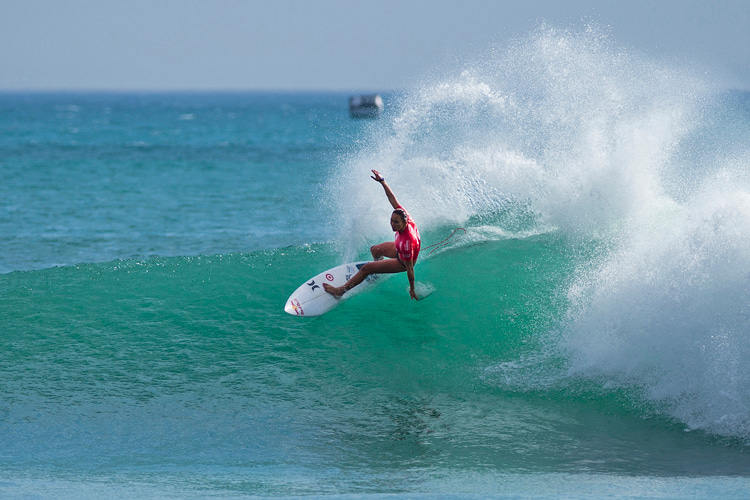Carving is a cornerstone technique in the art of power surfing and one of the sport’s essential maneuvers.
Carving is a slightly more complex version of the cutback and one of the symbols of power surfing.
Both maneuvers allow surfers to temporarily or permanently turn their boards, depending on the behavior of the wave.
Carving is basically to perform a power 180-degree turn by gradually applying pressure on the surfboard with your toes or heels.
In most cases, you’ll need to carve your surfboard in a powerful, fast-moving wave with wide-open sections ahead of you in order to get the most out of a ride.
In professional competitive surfing, it’s one of those timeless maneuvers that will always add extra points to a surfer’s score.
A perfectly executed carve takes place in the pocket of the wave; when you’re surfing on the rails of the surfboard, you’re carving.
The goal is to put all your power and weight on the rail to change your surf line and alter direction quickly.
In other words, the surfer harnesses the speed and power achieved, for example, out of a bottom-turn, to create a flowing arc on the face of the wave.
The trick is to apply the weight of your heels (frontside) or toes (backside) over the surfboard’s rail to cut the line and stay in the curl.


Carving 101
Here’s how to carve your surfboard:
1. Take off on a shoulder-high wave;
2. Generate speed by performing a well-executed bottom turn:
3. Drive off the bottom toward the top of the wave;
4. Push hard on your heel side without turning your shoulders;
5. Bury the rail of the surfboard in the wall of water;
6. Push on your legs and look above your shoulder;
7. Stick your leading hand in the wave;
8. Accelerate the shoulder axis rotation by pushing hard on your heels;
9. Extend your front leg to increase your back foot power;
10. Once the nose of the board has completed the turn, release the rail before hitting whitewater;
11. Get the board flat and eye the bottom of the wave;
12. Resume riding with a bottom-turn;
The perfect surfing carve should look like a powerful curve or arc drawn quickly and naturally on the face of a six-foot wave.
Interestingly, the carving technique often begins and ends with a bottom-turn.
One final word of advice – avoid sticking your hand too much in the water and not be on your inside rail when reaching the foam.





Recent Comments